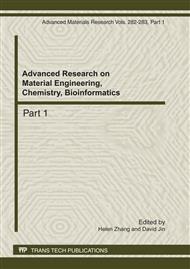p.375
p.379
p.384
p.388
p.395
p.399
p.403
p.407
p.412
Identifying Transition Rates of Ion Channels with One Loop
Abstract:
The constrained equations between transition rates and the derivative of open lifetime and shut lifetime distribution for a given state set of Markov Chain are provided. For gating scheme of ion channels with one loop, it is derived by those underlying information that all transition rates can be identified by their open and shut lifetime distributions at state 0 and any other two adjacent states.
Info:
Periodical:
Pages:
395-398
Citation:
Online since:
July 2011
Authors:
Price:
Сopyright:
© 2011 Trans Tech Publications Ltd. All Rights Reserved
Share:
Citation:


